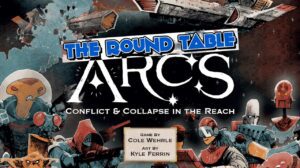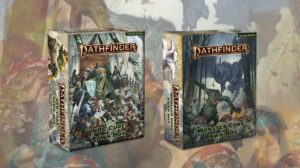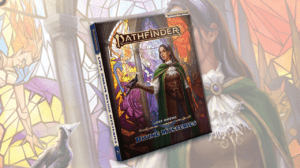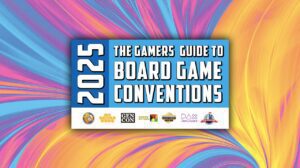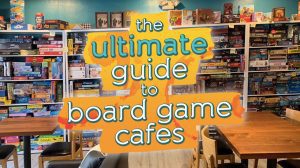Disclosure: Meeple Mountain received a free copy of this product in exchange for an honest, unbiased review. This review is not intended to be an endorsement.
My cousins were the biggest influence on my entrance into many aspects of the Geek-o-sphere, from Warhammer to board games. Ransacking their closet of games was one of my first activities when I visited, and one game that we’d often play was Stratego. I was terrible at it, but the idea of hidden troops and gaining intel as the battle progressed intrigued me and kept me coming back for more. Toy Battle takes the core concept of not knowing your opponent’s troops and adds an element of area control to the mix. Let’s find out more about this game of toy chest combat.
Toy Battle Overview
In Toy Battle, players command toy troops with the goals of earning the most medals or capturing the enemy Headquarters (HQ). Each player starts with the same base allocation of troops, but during setup four random, unknown troops are removed from each player’s stack. Four troops are placed—hidden from your opponent—on your wooden rack and the remaining troops are placed into a reserve pile.
On a player’s turn, they can either draw two new troops from their reserve to the rack, or they can place a single troop on the board. When drawing troops, there is a maximum of 8 troops allowed on your rack. This is a hard restriction, so if you would ever be prompted to draw troops when you don’t have space, you forgo that action.
Troops get placed on the indicated bases on the board, so long as you can create a continuous, controlled path from your HQ to the chosen space. To control a base, your troop must be on the top of the stack on that base. This creates a natural, marching progression of troops from the HQ towards your opponent’s HQ.
You don’t only have to place troops on empty bases, however. What kind of battler would that be? If an enemy troop occupies a given base, you can place one of your troops over the top of that troop if your troop’s value is strictly higher than the enemy troop in question. For example, I could place a Jumbo troop with value 3 over the top of an enemy Cap’n, which has a value of 2. You can also place troops on your own occupied bases if that would be beneficial to you.
When a troop is placed, you activate their ability followed by any special base abilities. Every troop—save the 7-value Roxy—has a unique ability that offers plenty of strategic depth regarding timing and placement. These range from abilities that can remove adjacent enemy troops or abilities that allow you to additionally draw extra troops from your reserve to the rack. This can also create explosive turns on the backs of abilities like the 2-value Cap’n, who allows you to place another troop that turn. You can imagine that chaining a couple of those together could wreak havoc on your opponent!
Throughout the board, enclosed sections of bases may also have star icons representing medals. Occupying every base surrounding that enclosed section awards you for those medals, in perpetuity. It doesn’t matter if the opponent swoops in and makes it so you no longer own those surrounding bases—they’re yours to keep. Reaching the board’s required medal count will win you the game.
If any player ever has to take a turn and can’t do anything because they’re out of troops completely, then the game ends. The winner in this case is whoever has the most medals. Sometimes the battle between toys is one of attribution, and just holding out long enough is enough to declare you the victor.

Toy Battle: Blink and It’s Over
For being a smaller box, Toy Battle impressed me with how much game is actually packed inside six cardboard walls. The game ships with four double-sided battle maps, each offering a different layout of bases and special bases with unique abilities. Special bases are spaces that offer an additional effect when landing on them. For example, it might allow you to return one of your troops from the board to your rack, or it could be detrimental like the Station Metal-X map where they negate troop placement abilities. This infuses the game with a lot of that buzzword replayability, creating different strategic puzzles for players.
Toy Battle‘s design doesn’t feel novel or overly unique, but it executes it in a way where the gameplay is streamlined to a delightful point where games can be over in under fifteen minutes. I’ve even had games last as little as five. Being able to pump out a quick three-game series is simple, and actually my preferred way to play.
Because each player removes four random troops from their reserves at the beginning of the game, it can lead to some skewed games where a player has a lot of their best troops removed. Playing a best-of-three series was how I decided to help mitigate that RNG factor, and it ends up working solely because the game plays so quickly.x
On the topic of bad draws, however, you have to keep in mind that it’s a two-way street. Sure, you might be unknowingly down two 7-value troops, but they might be down on the 3-value troops that could take care of them. This is a game that rewards players who put in the time to assess their available troops and make optimal plays in the moment. Every once in a while, you’ll also get a godly draw that allows you to chain three Cap’ns together and blitz the undefended enemy HQ enroute to victory.
My major qualm with the game is that there isn’t an easy way to keep track of what troops your opponent might still have in their rack and reserves. When you use a higher value troop to beat a lower value one, it gets stacked on the top. Only the top-level troops count for occupation, but if you have a stack with four or more troops, it is difficult to discern which troops make up that stack. It happens quite often in highly contested bases. I don’t want to be that guy who keeps track with a pen and paper, but it certainly helps in decision-making.
I appreciate that Toy Battle supports defensive and offensive playstyles, and both can be effective. In a defensive game, you use your high-value 5’s and 6’s to create a barrier around your HQ, weathering the storm until your opponent runs out of gas. On the flip side, you can rush the enemy HQ if you have a hand that supports it.
The requirement to have a continuous path from your HQ to a potential base in order to place troops there is the magic sauce for why this game works. If you only have a single path occupied on the way to your opponent’s HQ, it’s vulnerable to disruption. It’s just as much a game about supply chain management as it is overpowering troops. Knowing when to exploit your opponent’s overreaching is key to developing a winning strategy. Toy Battle may be light in theme, but its snappy gameplay allows me to overlook how this could easily be reskinned in an endless number of ways. It’s a fast-paced game of small-scale warfare whose short playtime makes it the easily digestible fast food version of contemporary two-player battlers. If only this meal came with a toy.





